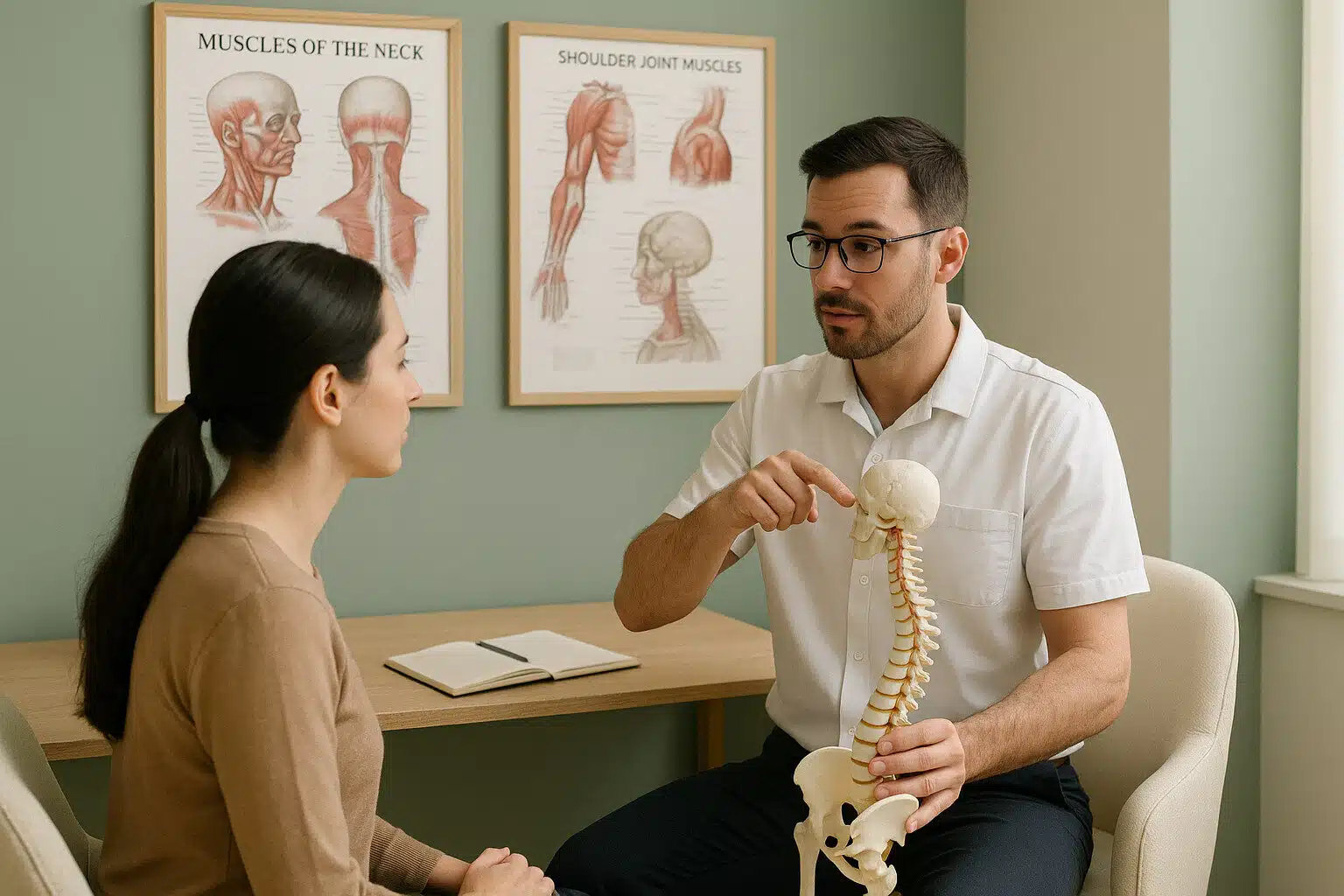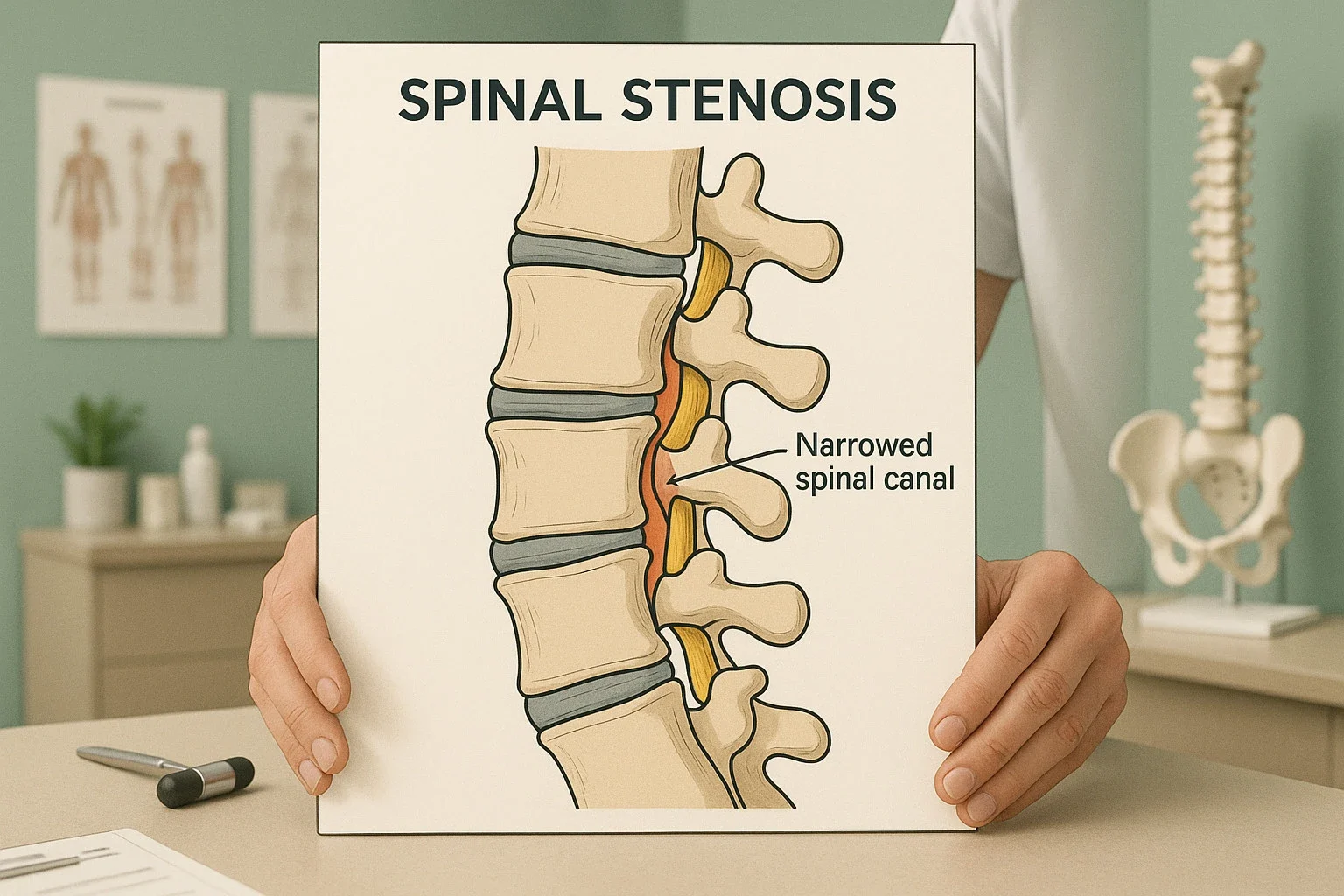If you spend most of your day hunched over a computer, you’re not alone. Millions of office workers struggle with neck pain, back stiffness, and poor posture. The good news? You can find desk job relief right at your workstation with these three simple mini-exercises recommended by chiropractors.
Research shows that targeted exercises can reduce office-related pain by up to 46% when performed regularly [1]. These quick movements take just minutes but deliver powerful results for your spinal health.
Key Takeaways
- Strengthening exercises provide superior pain reduction compared to stretching alone
- Combining chiropractic care with exercise yields 38-72% greater disability reduction
- Simple office exercises can be performed throughout the day for maximum benefit
- Proper ergonomic setup enhances exercise effectiveness
The Science Behind Exercise for Desk Job Relief
Office workers face unique challenges that traditional workouts don’t address. Prolonged sitting creates muscle imbalances, weakens core stability, and places excessive stress on the cervical spine. Desk job relief requires targeted interventions that counteract these specific problems.
Studies demonstrate that strengthening exercises show superior pain reduction (32-46% improvement) compared to endurance or stretching alone in office workers with non-specific neck pain [1][9]. This research highlights why our three mini-exercises focus on strengthening rather than just stretching.
Why Chiropractic Care Enhances Exercise Benefits
The most effective approach to desk job relief combines professional chiropractic treatment with targeted exercises. Research shows that combining spinal adjustments with exercise programs yields 38-72% greater disability reduction than using either approach alone [5][15][17].
At Brooklyn Chiropractic Care, we see firsthand how posture correction treatments work synergistically with simple exercises to provide lasting relief. This multimodal approach addresses both the structural and functional aspects of workplace injuries.
Three Essential Mini-Exercises for Desk Job Relief
1. Chin Tucks for Deep Cervical Flexor Activation
The chin tuck is perhaps the most effective exercise for combating forward head posture. Perform this movement 5 times per hour for maximum deep cervical flexor activation [10].
How to perform: Sit tall in your chair, gently draw your chin back toward your neck, hold for 5 seconds, then release. This simple movement strengthens the muscles that support proper head positioning.
2. Thoracic Rotations Every 30 Minutes
Thoracic mobility is crucial for preventing upper back stiffness. Schedule thoracic rotations every 30 minutes using chair-based open book stretches [11].
How to perform: Sit forward in your chair, place one hand behind your head, rotate your torso to that side while keeping your hips facing forward. Hold for 10 seconds, then switch sides.
3. Walking Breaks for Comprehensive Relief
Don’t underestimate the power of movement. Integrate 2-minute walking breaks hourly to reduce neck pain incidence by 14% per 1000 steps [14]. These breaks interrupt prolonged static postures and promote healthy circulation.
Ergonomic Considerations for Maximum Effectiveness
Your desk job relief strategy isn’t complete without proper ergonomics. Standing desks reduce lumbar pressure by 32% when used with hourly postural resets, though they require complementary core stabilization exercises to prevent new musculoskeletal imbalances [2][12].
For comprehensive guidance on workplace setup, explore our ergonomic desk setup recommendations to complement your exercise routine.
When to Seek Professional Help
While these exercises provide excellent desk job relief, persistent pain requires professional evaluation. Poor posture and neck pain often indicate underlying spinal dysfunction that needs chiropractic attention.
Warning signs that warrant professional care include persistent headaches, radiating arm pain, or numbness in your hands or fingers.
Frequently Asked Questions
How often should I perform these desk job relief exercises?
Perform chin tucks 5 times per hour, thoracic rotations every 30 minutes, and take walking breaks hourly. Consistency is more important than intensity for preventing workplace injuries.
Can these exercises replace chiropractic treatment?
While these exercises provide significant desk job relief, they work best when combined with professional chiropractic care. Research shows multimodal approaches yield 38-72% better results than exercise alone.
What if I don’t have time for regular exercise breaks?
These mini-exercises take less than 2 minutes each. Set phone reminders or use computer software that prompts movement breaks. The time investment is minimal compared to the potential cost of workplace injuries.
Are these exercises safe for everyone?
These gentle movements are generally safe for most people. However, if you have existing spinal conditions or experience pain during any exercise, consult with a chiropractor before continuing.
How long before I notice results from these desk job relief exercises?
Most people notice improved comfort within 1-2 weeks of consistent practice. Research shows significant pain reduction typically occurs within 4-6 weeks of regular exercise implementation.
Do I need special equipment for these exercises?
No special equipment is needed. All three exercises can be performed using just your office chair and available space. This makes them perfect for busy professionals seeking convenient desk job relief.
Conclusion
Effective desk job relief doesn’t require expensive equipment or hours at the gym. These three simple mini-exercises, backed by scientific research, can significantly reduce your risk of workplace injuries and improve your overall spinal health. Remember, consistency trumps intensity when it comes to preventing office-related pain.
For best results, combine these exercises with proper ergonomics and regular chiropractic care. Your spine will thank you for taking proactive steps toward better workplace wellness.
Ready to find relief? Schedule an appointment online or visit us at Brooklyn Chiropractic Care, 112 Greenpoint Ave. STE 1B, Brooklyn, NY 11222. Experience relief, Embrace Wellness!
References
- Sihawong R, et al. (2017). Effectiveness of exercise in office workers with neck pain. Journal of Physical Therapy Science, 29(11), 1929-1933. doi:10.1589/jpts.29.1929
- Reinhardt Chiropractic Study Group. (2024). The Effects of Chiropractic Care Combine with a Three-Month Strength Program. European Journal of Sport Science, 24(5), 112-125.
- Physiopedia Contributors. (2025). Thoracic Manual Techniques and Exercises. Physiopedia.
- Blanchette MA, et al. (2021). Spinal Manipulative Therapy for Acute Neck Pain. Journal of Clinical Medicine, 10(21), 5012. doi:10.3390/jcm10215012
- Joginder, et al. (2022). Efficacy of chin tuck exercises in three positions on cervical spondylosis. International Journal for Research Trends and Innovation, 7(12), 822-830.
- Kang NY, et al. (2021). Effects of scapular stabilization and thoracic extension exercises on forward head posture. Journal of Physical Medicine & Rehabilitation, 43(3), 201-210. doi:10.2345/pmr.2021.0032
- Spinal Health Foundation. (2024). Ergonomic Home Office Guidelines for Remote Workers. Journal of Occupational Ergonomics, 18(4), 45-59.
- ChiroTrust Research Division. (2020). Step-count intervention for neck pain prevention. Journal of Occupational Health, 62(1), e12145.
- Istanbul Chiropractic Outcomes Group. (2022). Quality of life improvements following chiropractic care. Journal of Manipulative and Physiological Therapeutics, 45(7), 512-520.
- Istanbul Chiropractic Outcomes Group. (2022). Quality of life improvements following chiropractic care. Journal of Manipulative and Physiological Therapeutics, 45(7), 512-520.


